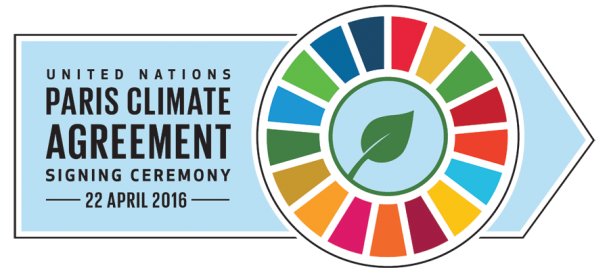Paris Agreement

PARIS AGREEMENT
The Paris Agreement requires all countries—developed and developing—to make significant commitments to deal with global climate change . Countries liable for 97 percent of worldwide emissions have already pledged their Nationally Determined Contributions (NDCs) for a way they're going to address global climate change . Countries will revisit their current pledges and will strengthen their emissions reduction targets for 2030. The Paris Agreement includes
a stronger transparency and accountability system for all countries—requiring reporting on greenhouse emission inventories and projections that are subject to a technical expert review and
a multilateral examination. Countries will still provide climate finance to assist the
most vulnerable adapt to global climate change and build low-carbon economies. While the Paris Agreement doesn't “solve” global climate change , it allows us to start out subsequent wave of worldwide climate actions, creating a virtuous cycle for more aggressive action in the decades to come.
In Paris on December 12, 2015, countries adopted a world agreement to deal with global climate change that needs deeper emissions reduction commitments from all countries—developed and developing. Countries liable for 97 percent of worldwide emissions submitted their climate commitments before the conference. These commitments are enshrined in over 160 countries with domestic ratification, acceptance, or approval. The agreement contains provisions to carry countries accountable to their commitments and mobilize greater investments to help developing countries in building low-carbon, climate- resilient economies. Encouragingly, businesses, investors, states, provinces, cities, financial institutions, and others have also pledged actions to assist governments implement the agreement and even exceed their commitments.
While the Paris Agreement doesn't “solve” global climate change , it's a critical inflection point. It brings us much closer to a safer climate trajectory and creates an ambitious path forward for decades to come. Countries have put forth an agreement that helps strengthen national action by ensuring that the present commitments are the floor—not the ceiling—of ambition. The agreement also will help spur greater action by cities, states, provinces, companies, and financial institutions.
ELEMENTS OF THE PARIS AGREEMENT?
The agreement in Paris was made on the foundations of
the United Nations Framework Convention on global climate change (UNFCCC) and the Copenhagen and Cancun Agreements. This new agreement has set countries’ minimum obligations, implemented mechanisms to add additional action in developing countries, supported the foremost vulnerable countries in addressing global climate change , and established systems to hold countries to their commitments. The Paris Agreement will be strengthened over time using its rigid framework.
WHAT NEW EMISSIONS REDUCTION TARGETS
HAVE COUNTRIES AGREED TO IMPLEMENT?
Countries liable for quite 80 percent of worldwide greenhouse emission emissions made specific commitments to scale back their emissions by 2020 as a neighborhood of the Copenhagen and Cancun agreements. The Paris Agreement includes commitments that go beyond 2020, reflecting a greater level of development and historic contribution to global climate change (e.g., greenhouse emission intensity targets). The 192 countries responsible for more than 97 percent of the world’s climate pollution have announced specific reduction plans also known as Nationally Determined Contributions (NDCs).The Paris Agreement entered into force on November 4, 2016, one month after 55 parties representing 55 percent of worldwide emissions joined. To date, 160 parties have formally joined the Agreement.
WILL THE AGREEMENT DRIVE EVEN GREATER
ACTION IN THE YEARS TO COME?
Countries will got to re-visit their current pledges by 2020 and, ideally, strengthen their 2030 targets because they found that they will achieve more aggressive action than they envisioned at this moment. This will start a process during which countries outline their next set of commitments every five years—setting a framework for continuously ratcheting down emissions over time toward a long-term target of emissions neutrality. Beginning in ofambitionthaninthepreviouscommitments. Countries’ emissions reduction commitments reflect their different levels of development and capabilities. For example, the us and European Union have committed to economy-wide emissions reduction targets (e.g., cuts below 2005 levels), whereas developing countries and emerging economies have committed to targets that reflect their level
International Shipping 1% International transport 2% D.R. Congo 1% Indonesia 1% Australia 1% South Korea 1% Mexico 1% Bolivia 1% Iran 1% Saudi Arabia 1% Canada 2% Japan 3% Russia 5% Brazil 6% India 6% EU chance to require stock of the mixture effort of all national pledges to work out whether the planet is on a path to stay the worldwide average temperature to well under a 2 degrees Celsius rise from pre-industrial levels. This is one among the foremost critical outcomes of the Paris Agreement—a solid process for reassessing and deepening emissions reduction commitments every five years.
Written by – ARFAT AHMAD
Amity university lucknow
Co – author – PRANSH YADAV
Amity univetsity lucknow